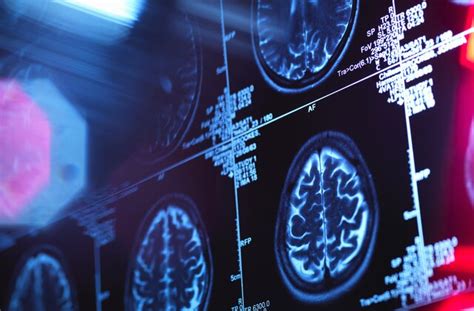Are you fascinated by the intricate workings of the human brain? Do you dream of unraveling the mysteries of the mind and applying your knowledge to real-world scenarios? If so, a career in neuroscience may be the perfect fit for you. In this blog post, we will explore the top neuroscience programs offered at universities across the United States. From introductory courses to advanced research opportunities, we will guide you through the essential components of a neuroscience education. Whether you are interested in mastering neuroimaging techniques or applying neuroscientific principles in behavioral studies, these programs offer a diverse range of learning experiences. Additionally, we will discuss how these programs bridge the gap between neuroscience and other disciplines, such as psychology, and how they provide opportunities for hands-on experience through internships. Join us as we delve into the world of neuroscience and discover how you can turn your passion for the brain into a rewarding career.
Table of Contents
Understanding the Brain: Introduction to Neuroscience
Neuroscience is the study of the nervous system, including the brain, spinal cord, and networks of sensory and motor nerve cells. It is a fascinating field that aims to understand how the brain works, how it develops, and how it can go awry. The human brain is an incredibly complex organ, consisting of billions of interconnected neurons that communicate through electrical and chemical signals. Studying neuroscience provides insights into a wide range of phenomena, from why we feel emotions to how we perceive the world around us.
One of the key areas of focus in neuroscience is understanding the basic principles of brain function. This involves learning about the structure and function of neurons, the mechanisms of neurotransmission, and the ways in which neural circuits process and integrate information. By delving into these fundamental aspects of neurobiology, researchers can gain a deeper understanding of how the brain processes and generates thoughts, emotions, and behaviors.
Moreover, neuroscience encompasses various subfields, ranging from cognitive neuroscience, which explores how the brain supports mental processes such as perception and memory, to behavioral neuroscience, which investigates the biological mechanisms underlying behavior. Additionally, the field of developmental neuroscience seeks to elucidate how the brain develops from infancy to adulthood, shedding light on critical periods of growth and vulnerability.
Overall, an introduction to neuroscience provides a comprehensive overview of the intricate workings of the brain and nervous system. By delving into this multifaceted discipline, individuals can gain a deeper appreciation of the biological underpinnings of human cognition, emotion, and behavior. Understanding the brain is a vital pursuit that holds immense promise for advancing our knowledge of the mind and potentially uncovering new treatments for neurological and psychiatric disorders.
Exploring the Top Neuroscience Programs in the US
When it comes to pursuing a career in neuroscience, choosing the right program is crucial. The United States is home to some of the top neuroscience programs in the world, offering students the opportunity to learn from leading researchers and experts in the field.
One of the top neuroscience programs in the US is the Harvard University’s Department of Neurobiology, which offers a comprehensive curriculum and access to state-of-the-art research facilities. Students have the chance to work alongside renowned faculty members and engage in cutting-edge research projects.
Another top program is at Stanford University, known for its interdisciplinary approach to neuroscience education. Students have the opportunity to collaborate with faculty from various departments, gaining a well-rounded understanding of the field.
The University of California, San Francisco (UCSF) also boasts a top-tier neuroscience program, with a focus on translational research and clinical practice. The university’s location in the heart of the biotech industry provides students with unique opportunities for internships and hands-on experience.
Building the Foundation: Core Courses in Neuroscience
When embarking on a journey into the fascinating world of neuroscience, it is crucial to start by laying a solid foundation. Core courses in neuroscience provide the fundamental knowledge and skills necessary to understand the complex workings of the brain and nervous system. These courses are designed to introduce students to the basic principles of neuroscience, including the structure and function of the nervous system, as well as the cellular and molecular mechanisms underlying behavior and cognition.
One of the key components of core courses in neuroscience is the exploration of neuroanatomy. Students delve into the intricate structures of the brain and spinal cord, gaining a deep understanding of how different regions and pathways contribute to various physiological and cognitive functions. Through in-depth study of neuroanatomy, students develop the spatial awareness necessary to comprehend the interconnected nature of the brain and its impact on behavior and health.
In addition to neuroanatomy, core courses in neuroscience also cover neurophysiology, which examines the electrical and chemical processes that enable nervous system function. This includes the study of synaptic transmission, neuronal communication, and the mechanisms underlying sensory perception, movement, and cognition. By grasping the principles of neurophysiology, students are equipped with the knowledge to comprehend how neural activity gives rise to thought, emotion, and behavior.
Furthermore, core courses in neuroscience often incorporate topics such as neurobiology, neurochemistry, and neuropharmacology, providing a comprehensive foundation in the biological basis of brain function. Students engage with the latest research and findings in these areas, gaining an appreciation for the intricate mechanisms that underlie neural processes and behavior. Ultimately, these core courses serve as the building blocks upon which students can construct a deep understanding of the complexities of the nervous system and its influence on human cognition and behavior.
Unraveling the Mysteries: Advanced Research Opportunities
When it comes to neuroscience, the field is constantly evolving, and with that evolution comes the opportunity for advanced research. For those looking to delve deeper into the mysteries of the brain, there are numerous opportunities for advanced research that can provide invaluable insights and contribute to the broader body of knowledge in the field.
One of the most exciting aspects of advanced research in neuroscience is the opportunity to explore cutting-edge technologies and methodologies. From advanced neuroimaging techniques to molecular and cellular approaches, researchers have the chance to push the boundaries of what is known about the brain and its functions.
Furthermore, advanced research opportunities in neuroscience often involve interdisciplinary collaborations, allowing researchers to work with experts in fields such as psychology, genetics, and computational neuroscience. This not only broadens the scope of research but also fosters innovation and creativity.
Overall, advanced research opportunities in neuroscience offer a chance to contribute to the ever-growing body of knowledge about the brain and its functions, while also providing a platform for personal and professional growth and development.
Mastering Neuroimaging Techniques: Cutting-Edge Technology in Neuroscience
Neuroimaging techniques have revolutionized the field of neuroscience, allowing researchers to peer into the brain and unravel its complexities like never before. The use of magnetic resonance imaging (MRI), positron emission tomography (PET), and functional magnetic resonance imaging (fMRI) has provided unprecedented insights into the structure and function of the brain.
These cutting-edge technologies have transformed our understanding of neurological disorders, cognitive processes, and the effects of various interventions on brain function. The ability to visualize brain activity in real time has opened up new avenues for research and clinical applications, fostering breakthroughs in neurology, psychiatry, and psychology.
Mastering neuroimaging techniques requires a deep understanding of the underlying principles, advanced computational skills, and expertise in data analysis. The integration of neuroimaging with other disciplines, such as genetics, pharmacology, and cognitive science, has expanded the possibilities for studying the brain and developing innovative treatment strategies.
The continuous evolution of neuroimaging technologies promises even greater precision and detail in the future, offering the potential to unlock the secrets of the mind and further advance our knowledge of the brain. As researchers and practitioners continue to push the boundaries of neuroimaging, the transformative impact of these state-of-the-art tools on neuroscience and clinical practice is truly remarkable.
Developing Neurological Disorders Expertise
When it comes to the study of neurological disorders, it is essential to have a strong foundation in neuroscience and an understanding of the underlying mechanisms that contribute to these conditions.
Developing expertise in neurological disorders involves learning about the various types of disorders, such as Alzheimer’s disease, Parkinson’s disease, epilepsy, and multiple sclerosis, and the impact they have on individuals and their families.
Furthermore, gaining expertise in this area requires a deep understanding of the diagnostic tools and treatment options available for different neurological disorders, as well as the latest research and advancements in the field.
By immersing oneself in the study of neurological disorders, individuals can develop the knowledge and skills necessary to make significant contributions to the field, whether through research, clinical practice, or advocacy.
Applying Neuroscientific Principles in Behavioral Studies
Behavioral studies have long been a fundamental component of the field of neuroscience. By integrating the principles of neuroscience into the study of behavior, researchers gain a deeper understanding of the underlying mechanisms that drive human and animal actions.
One of the key neuroscientific principles applied in behavioral studies is the concept of neural plasticity, which refers to the brain’s ability to reorganize itself in response to new experiences or environmental changes. This principle plays a crucial role in shaping behavior and learning, and researchers often use behavioral studies to explore the relationship between neural plasticity and specific behavioral responses.
Another important application of neuroscientific principles in behavioral studies is the use of neuroimaging techniques to investigate the neural correlates of behavior. Functional magnetic resonance imaging (fMRI) and positron emission tomography (PET) are commonly used to map brain activity during various behavioral tasks, providing valuable insights into the neural mechanisms underlying specific behaviors.
Furthermore, behavioral studies that incorporate neuroscientific principles can shed light on the impact of neurological disorders on behavior. By examining the behavioral symptoms associated with conditions such as Alzheimer’s disease, Parkinson’s disease, and schizophrenia, researchers can better understand the neural basis of these disorders and develop more effective interventions.
Bridging the Gap: Integrative Neurobiology
Neurobiology is a multidisciplinary field that seeks to understand the biological basis of behavior and cognitive function, integrating knowledge from various scientific disciplines such as biology, psychology, and genetics. It endeavors to bridge the gap between these different areas of study, ultimately leading to a more comprehensive understanding of the brain and nervous system.
Through integrative neurobiology, researchers aim to elucidate the complex interactions between genetic, molecular, and cellular processes that underlie neurological function. This approach takes into account the intricate connections between different levels of biological organization, from the molecular and cellular to the systems and behavioral levels.
One of the key goals of integrative neurobiology is to apply insights from diverse fields to address major challenges in neuroscience, such as understanding the etiology of neurodegenerative diseases, developing effective treatments for psychiatric disorders, and unraveling the complexities of brain development and plasticity.
By fostering collaboration and dialogue among scientists from various backgrounds, integrative neurobiology plays a pivotal role in advancing our knowledge of the brain and nervous system, paving the way for innovative discoveries and breakthroughs in neuroscience.
Interdisciplinary Approaches: Neuroscience and Psychology
When it comes to understanding the human brain and behavior, an interdisciplinary approach that combines both neuroscience and psychology is essential. By integrating the principles and methods of these two fields, researchers and practitioners can gain a more comprehensive understanding of the intricate workings of the brain and its influence on human action and cognition.
Neuroscience focuses on the structure and function of the nervous system, while psychology delves into the complexities of human behavior and mental processes. The integration of these two fields allows for a more holistic approach to studying the brain and behavior, incorporating biological, psychological, and even social factors that contribute to our understanding of the mind.
Interdisciplinary approaches in neuroscience and psychology allow for groundbreaking research and innovative interventions in areas such as mental health, addiction, and cognitive disorders. By collaborating across disciplines, researchers can develop a more nuanced understanding of these complex issues and come up with more effective treatment strategies.
Moreover, an interdisciplinary approach also has implications for educational and clinical practices. By incorporating both neuroscience and psychology into training programs, professionals in the field can offer a more comprehensive and personalized approach to addressing the needs of individuals with neurological or psychological challenges, ultimately leading to better outcomes for patients.
Transforming Learning into Practice: Neuroscience Internships
Neuroscience internships provide an invaluable opportunity for students to apply their knowledge and skills in a real-world setting. These programs offer hands-on experience in various aspects of neuroscience, from conducting research to assisting in clinical settings.
Students gain practical insight into the field through mentorship and guidance from experienced professionals, allowing them to translate their classroom learning into practical skills. This immersive experience not only enhances their understanding of neuroscience but also helps them to develop critical thinking and problem-solving abilities.
By actively participating in internships, students are able to network with industry experts and potential employers, creating valuable connections for future career opportunities. These internships also provide the chance to work on cutting-edge research projects and gain exposure to the latest advancements in the field of neuroscience.
Overall, neuroscience internships serve as a bridge between academic learning and real-world application, empowering students to transform their theoretical knowledge into practical expertise.





